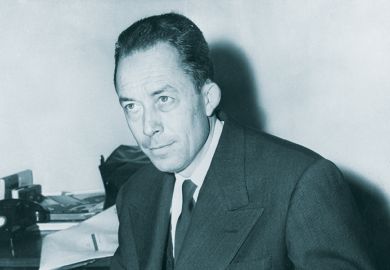Felix Corley may be right to state in his introduction that "this newly revealed material has brought few earth-shattering surprises'', but he should not be too modest. He has made available to the broad public a treasure trove of new information on Communist policy towards religion, a great deal of which is still unknown even to the specialist.
One consequence of the collapse of communism is the partial opening and sporadic accessibility of party, KGB and related files, not only in the capital, but, as Religion in the Soviet Union: An Archival Reader indicates, in regional centres also. While the immense wealth of this new material has opened avenues of study which for decades scholars could only dream about, it will take many more painstaking years to locate and gain access to it all, let alone assimilate the contents. This book illustrates the richness and geographical spread of the new resources relating to one specific subject, while the author makes the claim that he has selected from among "many millions'' of possible documents.
It is indeed astonishing in retrospect how high a priority the party gave to the war on religion, begun by Lenin, bolstered (and later relaxed) by Stalin, then reheated by Khrushchev. Felix Corley gives a good idea of the high level at which this atavistic urge to destroy religion resurfaced in a variety of historical circumstances. It is useful, to have representation from other geographical locations than Moscow (Kostroma, a provincial city in central Russia, as well as the distant Muslim city of Samarkand).
Considering the uniformity of the source of these documents, their monothematic ideological content and the bureaucracy of their style, I had expected to find this collection virtually unreadable. The opposite turned out to be true, due in no small measure to the judiciousness of the author's selections, the broad thematic coverage among the denominations and religions, the relative brevity of each extract and especially his linking commentaries, always accurate and to the point. The nonspecialist will not wish to read this book from cover to cover, but anyone with even the most minimal curiosity about what occurred behind the scenes in the Soviet period will find it rewarding to dip into this always well translated collection.
It is an expensive book at Pounds 45 for 400 pages, but it is essential that libraries should stock it. Because of the success of Corley's trawl, it is highly unlikely that anything similar will appear again in English.
For the specialist, these texts will answer some conundrums, but there are many more questions that must be further pursued in the Soviet archives. No historian can now write on religion under communism without reference to these documents. This reviewer learned something from almost every one: perhaps most notably the protocol of Stalin's volte face meeting with the few available church leaders in 1943, when he promised concessions and kept his word.
It is now more difficult to gain access to such documents than it was in the days immediately after the anti-Gorbachev coup. Time, patience and determination to find means of access are all essential to carry out further work.
Canon Michael Bourdeaux is director, Keston Institute, Oxford.
Religion in the Soviet Union: An Archival Reader
Author - Felix Corley
ISBN - 0 333 61659 6
Publisher - Macmillan
Price - £45.00
Pages - 402
Register to continue
Why register?
- Registration is free and only takes a moment
- Once registered, you can read 3 articles a month
- Sign up for our newsletter
Subscribe
Or subscribe for unlimited access to:
- Unlimited access to news, views, insights & reviews
- Digital editions
- Digital access to THE’s university and college rankings analysis
Already registered or a current subscriber? Login



